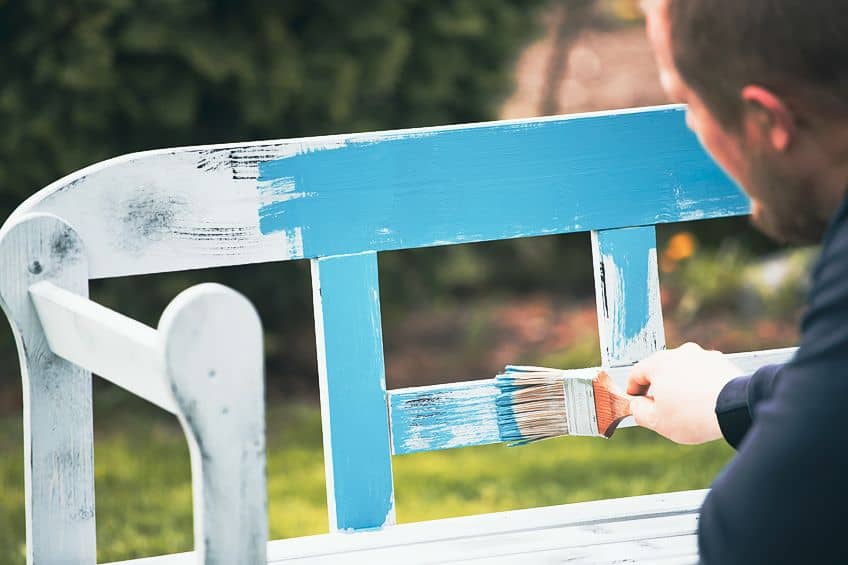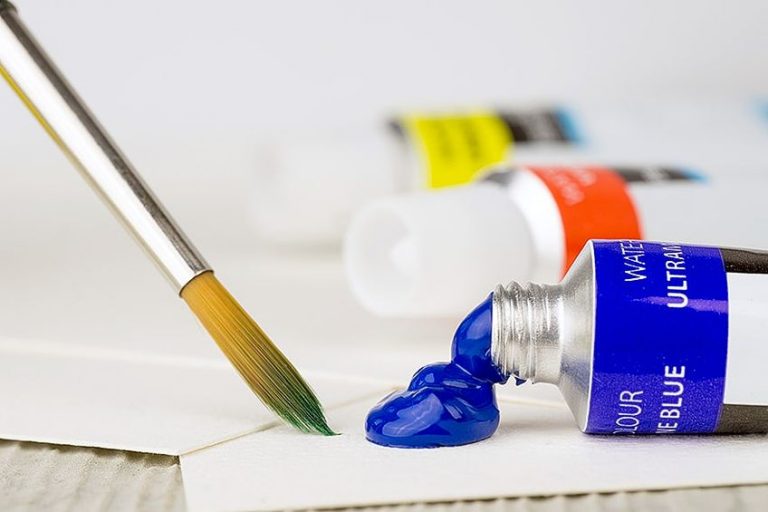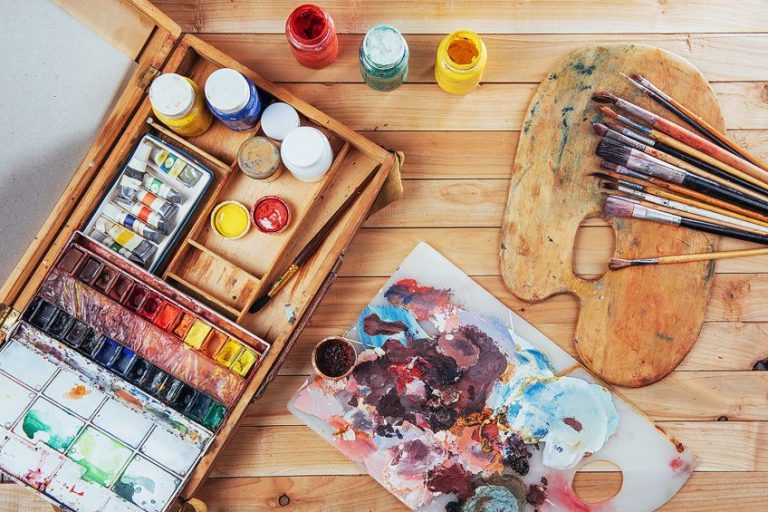Can You Use Oil Paint on Wood? – How to Use Oil Paint on Wood
When it comes to painting wooden structures and objects, there are very few techniques as classic and elegant as the use of oil paints. The medium adds an almost unparalleled degree of richness and depth to your work, and not only just in the traditional arts. Painting wood with oil-based mediums does, however, require a fair degree of knowledge surrounding surface preparation and proper application for users to ensure a favorable outcome. You will also need to know whether or not you need a primer, what primer works best, and how to use said primer. Worry not, for if you are interested in learning these things and a little bit more about how to paint wood with oil paints, then you have come to the right place!
Can You Use Oil Paint on Wood?
Yes, you absolutely can! Using oil-based mediums to paint and decorate wood remains a popular and effective technique that artists and woodworkers have been exploring for centuries. Wooden substrates are host to a number of qualities that make for a unique painting surface that you may come to love.
Both the natural grain patterns and textures of wood can provide your artwork with character and depth that you could not achieve with other traditional painting surfaces.
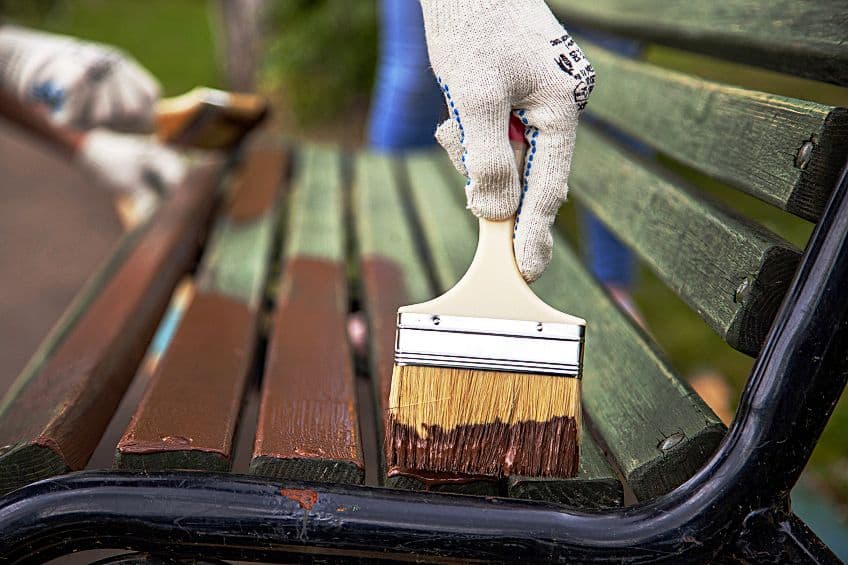
Benefits of Using Oil-Based Paint for Wood
Oil paints are rich in color, displaying a vibrancy unmatched by most other paints. When applied to the surface of wood, it produces an eye-catching luminescence that many artists have come to love. The aforementioned textures and grains of the wood will also provide better depth and character to the colors of the oil paint. Oil paints are also renowned for their immense durability and long-lasting properties. Both the natural grain patterns and textures of wood can provide your artwork with character and depth that you could not achieve with other traditional painting surfaces.
If you seal and protect them properly, your workpiece should remain in immaculate condition for decades into the future.
Oil canvas paint is also rather versatile and can be applied on wood in several ways to produce a great many effects, including transparent glazes and opaque color schemes. This is only in addition to the depth of texture provided by a wooden canvas. The pairing of oil paints on wood substrates can make for a gorgeous, three-dimensional result.

The organic aesthetic of wooden canvases can add a wealth of character to your paintings, especially if they depict subjects from nature. Lastly, another benefit of using oil paints on wood would be the authenticity and popularity of the medium.
The use of oil paints will elevate the prestige of whatever art you are creating and will act as a firm contribution on your part to an age-old tradition within the fine arts.
Priming Wood Before Painting
However, it would serve you well to properly prepare the surface of the wood before you begin to paint it with oil paints. This would involve the use of a primer, which will produce a barrier between the wood and the paint. This not only assists in improving the adhesion between the paint and the wooden surface but also assists in preventing your artwork from deteriorating.
You will have to base your choice of primer on the type of wood you are working with, as certain woods will be more porous or absorbent than others.

For example, softer woods like pine or fir may require more coats of primer than harder woods like oak or maple. You should note that the sort of primers you use may depend on the type of wood you will be working with. Some woods are either more absorbent or porous than others. Softwoods, such as firs and pines, might need more layers of primer as opposed to denser woods such as maple and oak.
Types of Primers for Wood
One of the most popular choices of primer to use when applying oil canvas paint to wood would be acrylic gesso. It is a white primer with a matte texture that you can sand into a smooth surface more suitable for painting. It works well with opaque colors and helps build up the texture of your work. You can also use an oil-based primer. It dries a bit slower but produces a glossy finish with high durability, perfect for painting with transparent or translucent colors.
Shellac-based primers are suitable for priming wooden surfaces with stains, knots, or other imperfections. They not only seal these issues quickly but dry fast as well.
You also have the option of using water-based primers, which you might want to consider using if your workspace is not well-ventilated. They too can be sanded into a smooth surface after drying. If you have properly primed your painting surface, you can get to the painting. Be sure to keep in mind that the type of wood you are using will have specific properties that may influence the overall aesthetics of your workpiece.
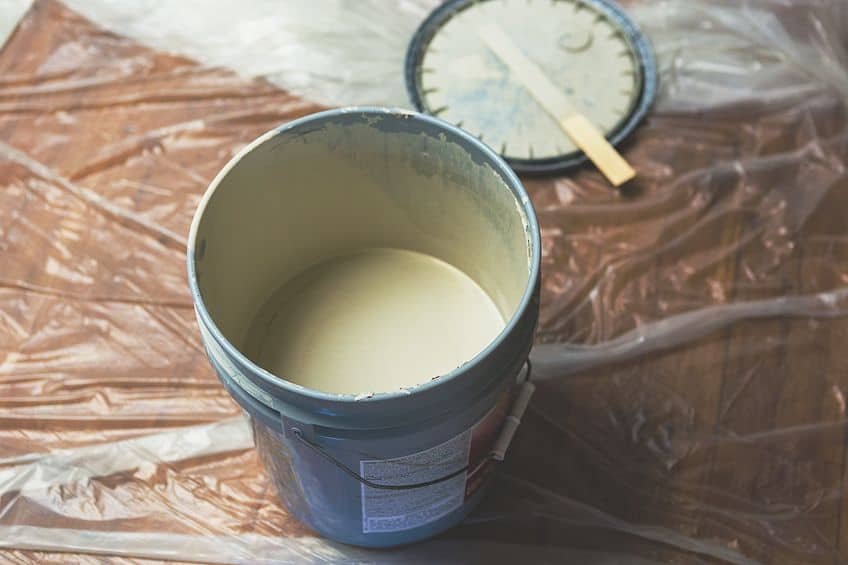
Natural grains, for example, will permeate through the paintwork, which can introduce further dimension and depth to your art. Oil painting on wood panel canvases is an absolute classic in the world of fine art and the results it can produce are stunning. It is important, however, to prime the surfaces of your wood first with the appropriate primer.
It may take a little bit of experimenting at first, but with enough practice, you can produce striking works of art that benefit from the natural beauty of the wood they are imposed onto.
| Type of Primer | Characteristics | Uses |
| Acrylic Gesso | White, matte finish. | Ideal for painting with opaque colors or building up texture. Can be sanded to a smooth surface. |
| Oil-Based Primer | Dries slowly, durable, glossy finish. | Ideal for painting with translucent or transparent colors. Can be sanded to a smooth surface. |
| Shellac-Based Primer | Dries quickly, seals knots and stains, glossy finish. | Ideal for painting over knots, stains, or other imperfections in the wood surface. |
| Water-Based Primer | Dries quickly, low odour, matte finish. | Ideal for painting with water-based paints or for use in areas with low ventilation. Can be sanded to a smooth surface. |
How to Prime Wood for Oil Painting
It is best practice to always apply a primer to your wood before painting. If you are painting on wooden panel canvases, you must first prime it to prevent your paint from soaking into the fibers. If paint seeps into the wood, this could result in discoloration, peeling, or cracking over the course of time. With a primer covering the wood, however, these issues can be completely averted.
Wood should be cleaned thoroughly before the application of a primer.
Any dirt, debris, or dust resting on the surface of your wood should first be wiped off before continuing. Unfinished or raw wood might also need to be lightly sanded into a smooth surface before priming. Thereafter, you can abide by the following instructions to produce a priming coat over wood before painting.
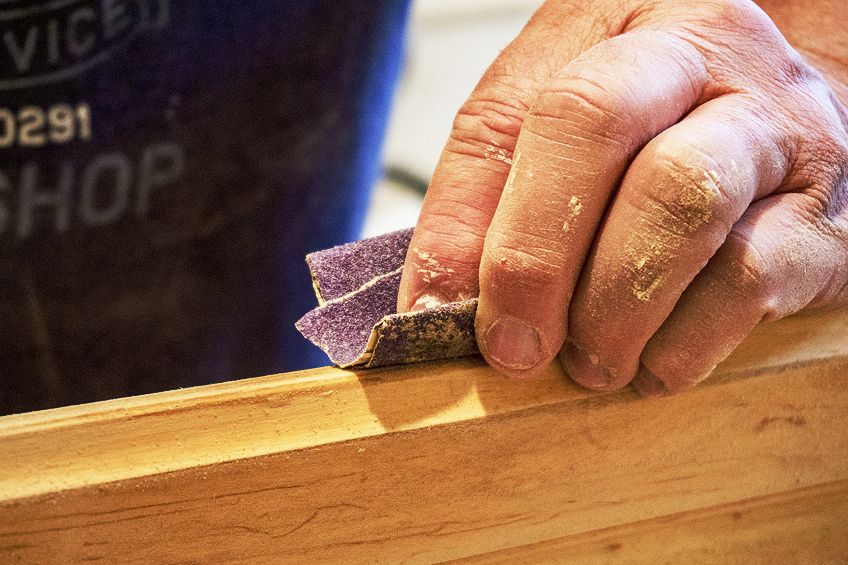
- Choose the right primer: There are several different primers to choose from and the one that you pick should be compatible with the wood you are working with. Consider both the surface conditions of your wood and what you would want as the end result. Refer to the table should you require assistance with this.
- Apply the primer: You may begin by spreading a thin layer of primer directly to the surface of the wood. This ought to be done using either a roller or paintbrush, depending on the size of your wooden canvas. The application of this layer of primer should be done in an even spread. For a better outcome, you should aim to apply the primer with strokes going in the same direction as the grain.
- Let it dry: You need to give the primer enough time to cure and dry before painting over it. Adhere to the manufacturer’s instructions on how long it takes for your primer to dry. Different primers have different drying times. The range of drying times can be between a matter of hours to a full 24 hours.
- Sand the surface: Only once the surface of the primer has completely dried, you can use sandpaper to smoothen the surface. Fine-grit sandpaper is the most optimal choice for this job as it better ensures a smooth surface. You should be left with an even surface perfect for the application of your oil paint.
- Apply the oil paint: Now that the wood is both primed and sanded, you may proceed to paint it.
How to Paint Wood With Oil Paints
If you have experience in working with oil paints you should find little to no difficulty in translating these skills to painting on wood panel canvases. If, however, you lack experience or would like to brush up on how to use oil-based paint for wood, here is a how-to guide for you:
Step 1: Gather Supplies
You are going to need all the necessary supplies before you can start painting. You will, of course, need your oil paints. In addition to this, you must have brushes, paint thinner, a container for mixing, fine-grit sandpaper, and a clean cloth. Last but not least, you should have your primed and smoothed wooden canvas prepped and ready.
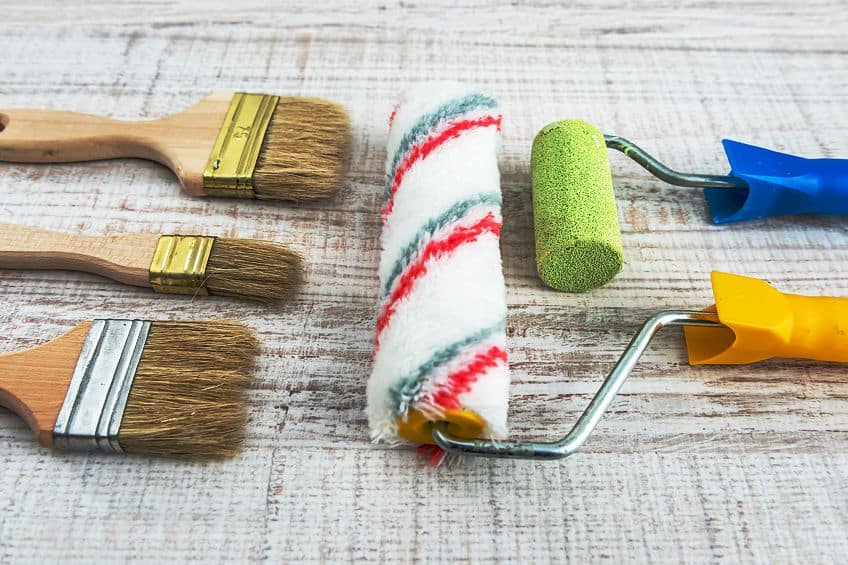
Step 2: Mix Your Paint
Inside your mixing container, pour in a small volume of paint along with the thinner. Mix the two thoroughly until you have a smooth and consistent mixture.
Step 3: Apply the Paint
Using a brush dipped in the paint mixture, you can begin painting on your wooden surface. Your brush strokes should ideally be long and smooth as you are going for even coverage. Try to not apply too much paint in one area as this may saturate the spot, which may cause dripping or pools to form.
If too much paint begins to accumulate in one spot, be sure to smooth it out.
Step 4: Let the Paint Dry
You will have to wait for the first layer of paint to cure and dry completely before you even consider putting down a second layer. If it is an oil-based paint for wood painting that you are making use of in your art project, this could take a while as oil takes much longer to evaporate. Depending on what sort of additives are in your paint or the humidity and temperature of your workspace, this could take anywhere between several hours to a day.
Only once the first coat has dried entirely should you move on to the second, and so on for any additional coats thereafter until you have achieved your desired coverage.

Step 5: Sand the Surface
Once the final layer of oil canvas paint has dried completely, you can then use fine-grit sandpaper to sand the surface of your paint to smooth out any bumps or remove any imperfections. Provided that you apply the sandpaper with a gentle touch and brisque strokes, you should have no difficulty in attaining a smooth and even finish.
Step 6: Clean Up
Once you have completed your painting, the job is not yet done. Now comes the time to clean up your supplies and workstation. You can use paint thinner to help you remove paint from your brushes, which should then be dried off using a clean cloth. Any paint or paint thinner can then be disposed of – be sure to do this in a way that aligns with your local waste regulations.

Tips and Tricks
If you do not have much experience working with oil paints or wooden canvases, here is a little something extra for you to consider. We have provided you with the following useful tips and tricks to afford you fewer headaches when attempting to work with these mediums:

- Make sure that your wooden surface is both clean and dry before painting. If there is any moisture or debris stuck to the surface before painting, this may adversely affect the adhesive capabilities of your paint.
- It might be best to use a roller as opposed to a brush should you wish to cover larger surface areas. This will expedite the task and make it easier for you to ensure an even spread.
- If your workspace is located indoors, make sure that it remains well-ventilated for the duration of your time spent working with oil-based paint. Oil-based paints are known for the harmful toxins they release into the atmosphere when exposed to oxygen.
- Decide how many coats you will need to apply after the first one has dried so that you can assess the coverage. You will always have the option to add more.
- You can sand down any mistakes or imperfections. You need only wait until the section you wish to remove has dried completely before sanding and reapplying more paint.
- Exercise patience when waiting for your sections to dry. Oil paints take much longer than most others to dry completely, so do not rush the process and allow each layer enough time to dry completely before moving on to the next.
Creative Ideas for Using Oil Paints on Wood
Oil painting is a medium defined not only by traditionalism but also versatility, and the same can be said for wood. There is a wide variety of different styles and techniques that you could explore when using oil paint on wooden canvases. Here are just a few examples:

- Use a wood-burning tool. You can produce interesting patterns or designs on the surface of your wood before it is primed and painted.
- If you are feeling experimental, you could try layering different colors. This will produce a multi-textured and multi-dimensional effect.
- If you want to achieve an expressive and bold look in your artwork, you could crop the brush and exchange it for a palette knife with which you could apply thicker paint layers. Keep in mind that this is likely to increase the expected drying time.
- When painting, you could look towards integrating the natural textures and grain of the wood into your painting. This can add a bit more depth and dimension to the work.
So, can you use oil paint on wood? Yes, you most certainly can, and the results can be absolutely amazing! Just be sure to prime your wood before painting to allow for proper adhesion with the paint. Hopefully, this article will set you in the right direction should you wish to expand your artistic repertoire into the realms of oil painting on wooden canvases.
Frequently Asked Questions
How Long Does Oil Paint Take to Dry?
A layer of oil paint can take several hours to a full day to dry. Other factors, such as humidity and temperature, will affect these times. Oil paint will typically dry faster in a well-ventilated area.
Can You Use Oil Paint on Wood?
Yes, oil paints can be applied on wooden canvases. It is important, however, that you first clean the surface of your wood and apply a primer before painting it. If you are using oil-based paint for wood surfaces, give each layer enough time to dry completely before moving on to the next.
In 2005, Charlene completed her Wellness Diplomas in Therapeutic Aromatherapy and Reflexology from the International School of Reflexology and Meridian Therapy. She worked for a company offering corporate wellness programs for a couple of years, before opening up her own therapy practice. It was in 2015 that a friend, who was a digital marketer, asked her to join her company as a content creator, and this is where she found her excitement for writing.
Since joining the content writing world, she has gained a lot of experience over the years writing on a diverse selection of topics, from beauty, health, wellness, travel, and more. Due to various circumstances, she had to close her therapy practice and is now a full-time freelance writer. Being a creative person, she could not pass up the opportunity to contribute to the Art in Context team, where is was in her element, writing about a variety of art and craft topics. Contributing articles for over three years now, her knowledge in this area has grown, and she has gotten to explore her creativity and improve her research and writing skills.
Charlene Lewis has been working for artincontext.org since the relaunch in 2020. She is an experienced writer and mainly focuses on the topics of color theory, painting and drawing.
Learn more about Charlene Lewis and the Art in Context Team.


